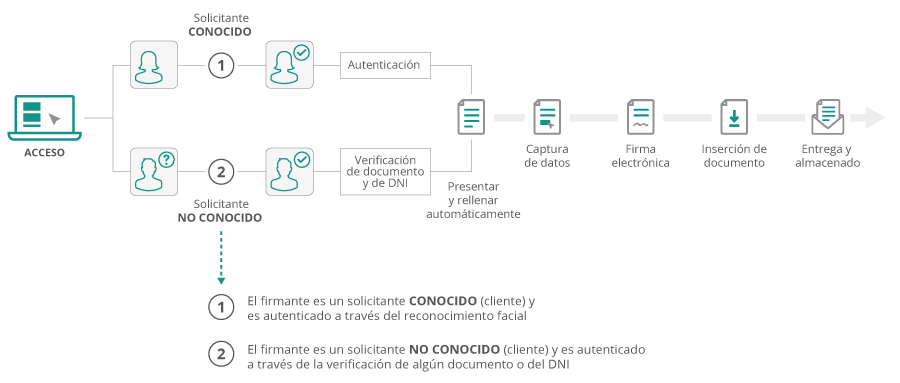Trends in facial biometrics
Life detection
For any facial biometrics technique it is essential to have the ability to detect forgery and fraudulent behavior. The most common form of phishing is to present a previously obtained static image of an individual for comparison with the image of a trusted source. To counteract this and ensure the person’s presence, some form of life detection can be employed.
There are many different life detection methods on the market today. The most common form of life detection prompts the user to perform a series of head movements to prove that it is a real person. More advanced techniques, such as 3D recognition and thermal imaging, require specialized hardware and are not suitable for everyday commercial applications.
Emotion recognition
Initially used unsuccessfully as an anti-terrorism tool in the mid-2000s, emotion recognition is once again attracting interest. But, this time it is in the context of a commercial application. The ability to determine an individual’s emotional state from a digital image can be used to enhance the customer experience or potentially influence consumer behavior.
Emotion recognition has been used for fatigue detection in car safety systems. Computer game designers are also using emotion recognition technology to detect the correct response from players when they score specific in-game points. As technology proliferates, humans can expect to interact with computer systems that can show empathy, or at least have some degree of emotional intelligence.
Multiple techniques are being developed to recognize emotions in a digital image of a face. At a basic level, the subject’s face is digitally transformed into a dataset of facial features and compared to a predefined emotional classification model.
However, the technology is still being perfected. Reliable classification models are difficult to create and require Artificial Intelligence (AI) learning tools to build and improve them. Differences in the way the same emotion is expressed between nationalities and races must be taken into account in any classification model.
Facial biometrics vs. facial comparison
Application fraud and account opening fraud continue to challenge banks and other financial institutions. Recent research by Aite Group revealed that application fraud was the second biggest fraud challenge for financial institutions, after account opening fraud.
Financial institutions can use facial biometrics to help combat fraud by validating a user’s identity in real time, whether the user logs in online or via their phone. Whether facial recognition or facial matching technology is used depends on whether a user is known or unknown.
If a user is not known (e.g., in the case of a digital customer remotely applying for a new account), financial institutions can use facial matching to compare a live image of the applicant with the image on a verified ID document to demonstrate that the user is not attempting to open an account fraudulently. Face matching can also help financial institutions comply with Know Your Customer (KYC) requirements during the opening of a new account.
If a user is known (e.g., in the case of an existing customer), financial institutions can use facial recognition to verify that a user is real and is not attempting to fraudulently access an account.

Future possibilities for automating human identity authentication
Financial institutions, businesses and governments are using facial matching and facial recognition for a wide range of use cases, from anti-fraud to payments, cross-border customers, law enforcement and access. While no technology is completely foolproof, industry, privacy and consumer adoption must be considered in any application of facial biometrics technology. The endless possibilities and benefits that the technology could bring should outweigh people’s concerns about privacy and the abuse that the technology could exert.
San Francisco recently became the first major U.S. city to ban facial recognition technology to protect citizens’ privacy. This may limit the use of facial recognition for law enforcement if other states do the same. As Sam Bakken notes, lawmakers may also find that “specific instances such as that represented by Apple Face ID and other technologies through which a user voluntarily enrolls in the system so that they can unlock their phone or log into other accounts that use their face, make it easy and convenient for consumers to add an additional layer of security to their mobile accounts and devices.”
As biometric technology applications continue to expand, universal standards can be developed to regulate the use of biometrics for automating human identity authentication and aid interoperability across geographic boundaries. For now, the benefits of facial biometrics for financial institutions during digital account opening and for fraud prevention remain clear.
Content extracted from
OneSpan
.
